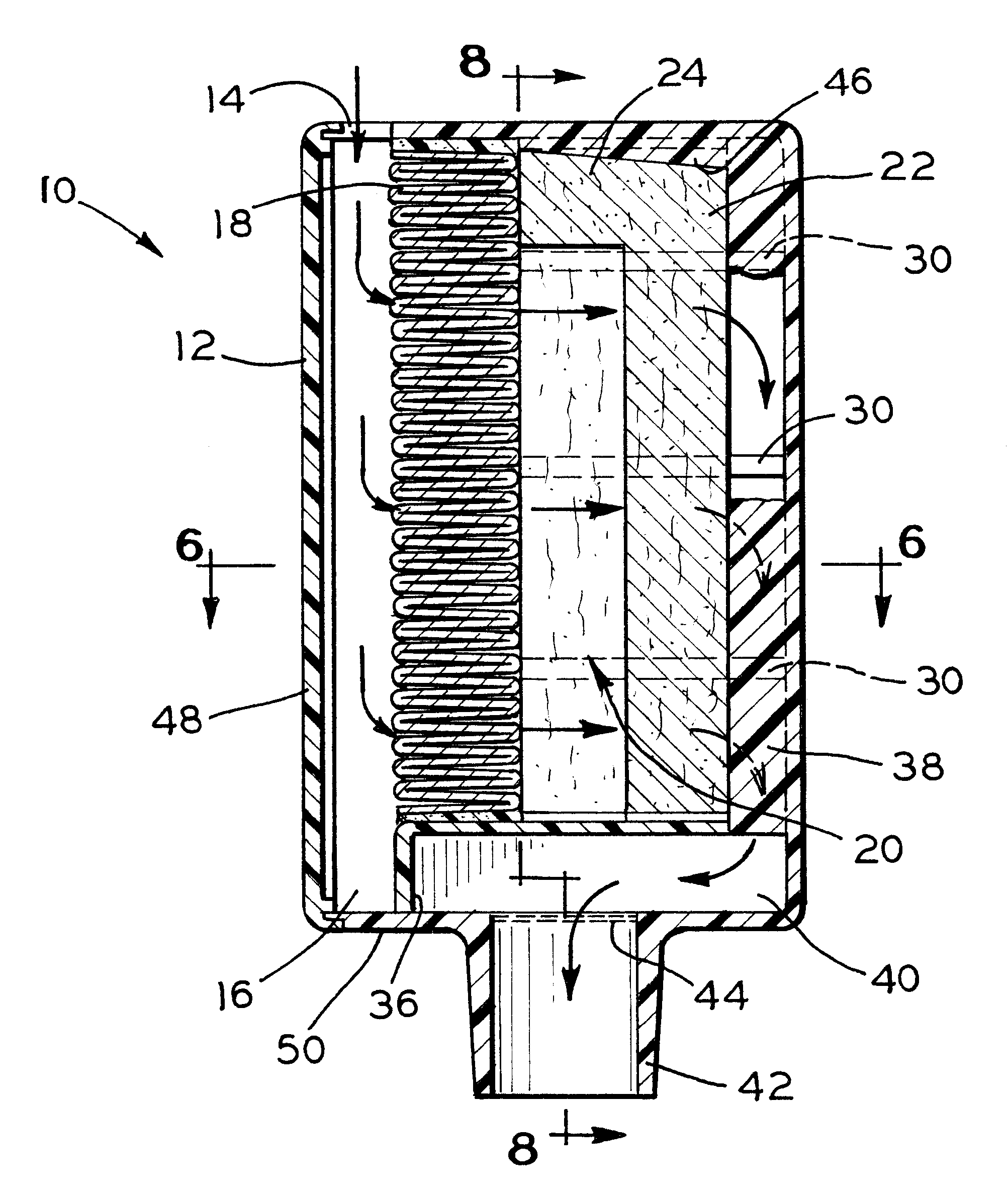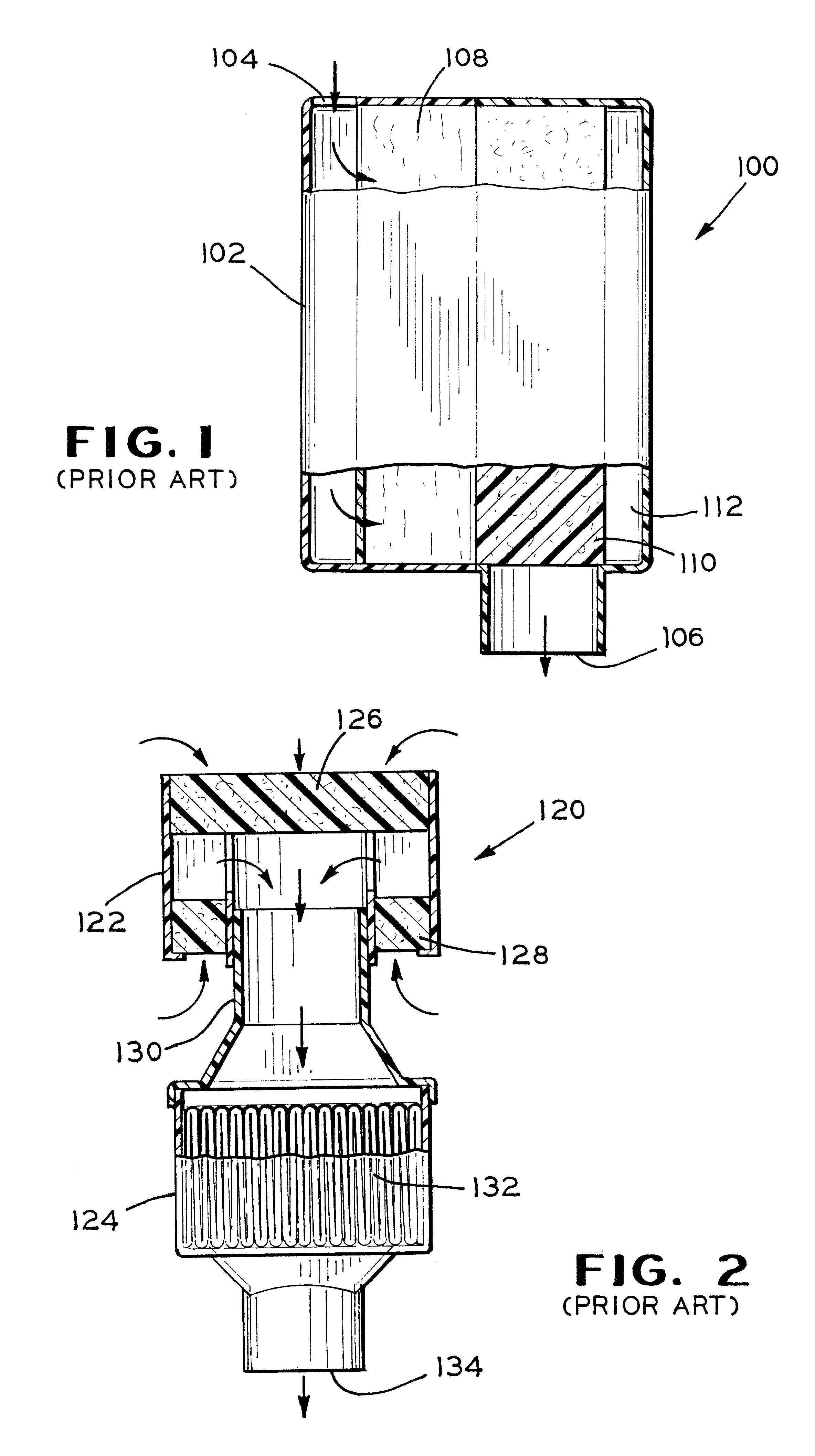Inlet silencer/filter for an oxygen concentrator
a technology of oxygen concentrator and inlet filter, which is applied in the direction of filtration separation, auxillary pretreatment, separation process, etc., can solve the problems of generating a significant amount of noise, affecting the service life of oxygen concentrator, so as to reduce maintenance time and expense, improve the filtering properties, and improve the service life
- Summary
- Abstract
- Description
- Claims
- Application Information
AI Technical Summary
Benefits of technology
Problems solved by technology
Method used
Image
Examples
Embodiment Construction
FIG. 1 illustrates a known inlet air filter 100 for an oxygen concentrator. The filter 100 includes a housing 102 with an air inlet 104 and an air outlet 106. After air comes in the inlet 104, it is then forced through a HEPA filter 108. Below the HEPA filter 108, and adjacent to the air outlet 106, is a felt pad 110 for sound absorption. As shown on FIG. 1, there is a further open area 112 inside the housing 102 and below the felt pad 110. As the felt pad 110 is adjacent the outlet 106, the open area 112 is not in the direct air flow to the outlet 106, although some air can flow through this area.
Another known air filter is depicted in FIG. 2. This air filter 120 has a first housing 122 and a second housing 124. Air is drawn into the first housing 122 through felt pads 126, 128. Felt pad 128 includes an opening through which a connecting section 130 connects the first housing 122 to the second housing 124. Inside the second housing 124 is a HEPA filter 132. The second housing also ...
PUM
| Property | Measurement | Unit |
|---|---|---|
| area | aaaaa | aaaaa |
| surface area | aaaaa | aaaaa |
| surface area | aaaaa | aaaaa |
Abstract
Description
Claims
Application Information
 Login to View More
Login to View More - R&D
- Intellectual Property
- Life Sciences
- Materials
- Tech Scout
- Unparalleled Data Quality
- Higher Quality Content
- 60% Fewer Hallucinations
Browse by: Latest US Patents, China's latest patents, Technical Efficacy Thesaurus, Application Domain, Technology Topic, Popular Technical Reports.
© 2025 PatSnap. All rights reserved.Legal|Privacy policy|Modern Slavery Act Transparency Statement|Sitemap|About US| Contact US: help@patsnap.com



